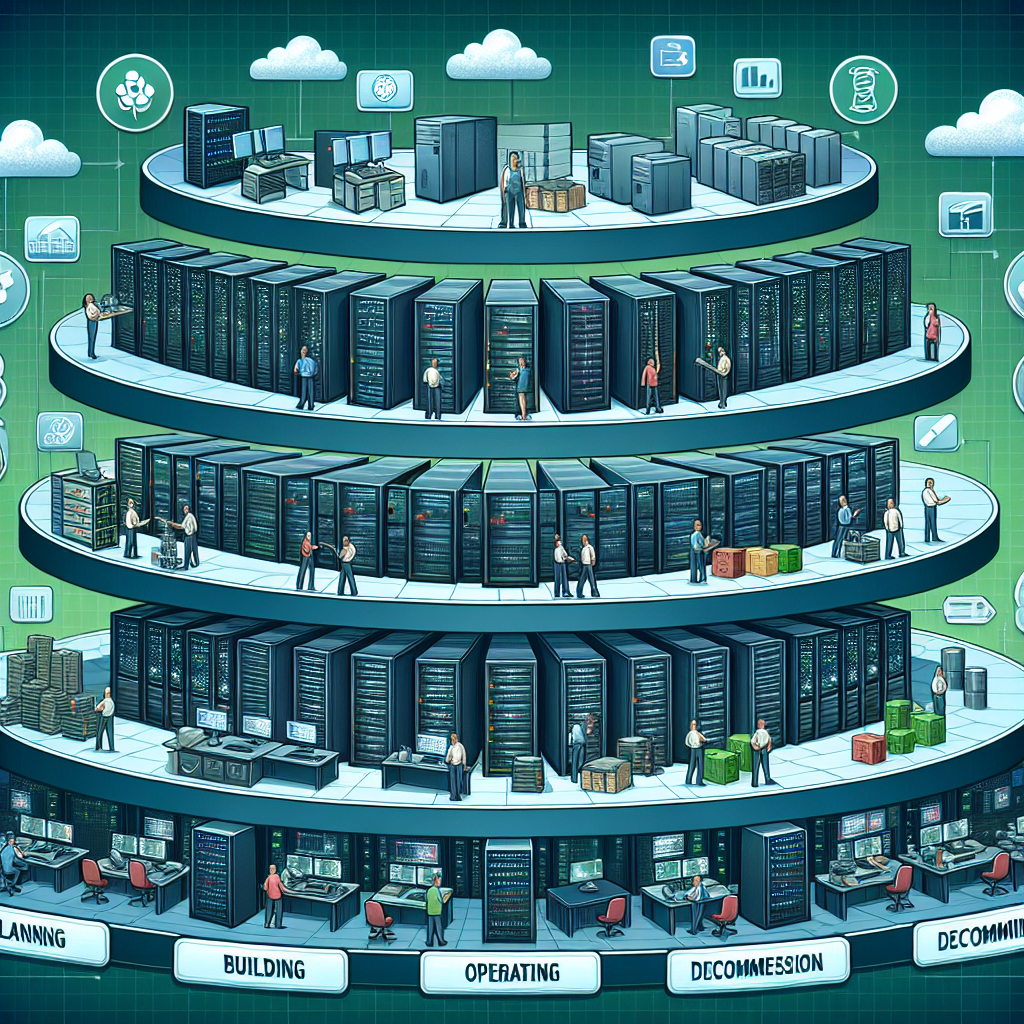Navigating Challenges in Data Center Lifecycle Management: Tips and Tricks for Success
Data centers play a crucial role in the operation of businesses, serving as the nerve center for storing and processing data. As data centers continue to grow in importance, organizations are faced with the challenge of managing the lifecycle of these facilities efficiently. From planning and deployment to maintenance and decommissioning, navigating the various stages of the data center lifecycle requires careful planning and execution. In this article, we will discuss some tips and tricks for success in managing data center lifecycle effectively.
1. Plan for Scalability: One of the key challenges in data center lifecycle management is ensuring scalability. As the demand for data storage and processing power continues to increase, organizations must plan for future growth when designing and building their data centers. This includes considering factors such as power and cooling requirements, space constraints, and networking infrastructure to accommodate future expansion.
2. Adopt a Modular Approach: To address the challenges of scalability and flexibility, many organizations are turning to modular data center designs. Modular data centers allow for easy expansion and customization, making it easier to adapt to changing business needs. By breaking down the data center into smaller, self-contained units, organizations can quickly deploy additional capacity as needed without disrupting existing operations.
3. Implement Energy-Efficient Solutions: With the rising cost of energy and growing concerns about environmental impact, energy efficiency has become a top priority for data center operators. Implementing energy-efficient solutions such as virtualization, server consolidation, and efficient cooling systems can help reduce operating costs and minimize the carbon footprint of the data center. Regular energy audits and monitoring can help identify areas for improvement and optimize energy usage.
4. Regular Maintenance and Upgrades: Like any other infrastructure, data centers require regular maintenance to ensure optimal performance and reliability. This includes conducting routine inspections, performing preventive maintenance on equipment, and upgrading outdated hardware and software. By staying proactive in maintenance and upgrades, organizations can minimize downtime and extend the lifespan of their data center equipment.
5. Disaster Recovery Planning: Data centers are vulnerable to a wide range of risks, including natural disasters, cyber attacks, and equipment failures. To mitigate these risks, organizations must develop a comprehensive disaster recovery plan that includes backups, redundant systems, and failover mechanisms. Regular testing of disaster recovery procedures is essential to ensure that the data center can quickly recover from any unexpected events.
6. Partner with Experienced Providers: Managing the lifecycle of a data center can be complex and challenging, requiring specialized knowledge and expertise. Partnering with experienced data center providers can help organizations navigate the various stages of the lifecycle more effectively. These providers can offer valuable insights, best practices, and support services to ensure the success of data center operations.
In conclusion, managing the lifecycle of a data center requires careful planning, proactive maintenance, and a focus on scalability and efficiency. By adopting a modular approach, implementing energy-efficient solutions, and partnering with experienced providers, organizations can navigate the challenges of data center lifecycle management successfully. With the right strategies and tools in place, organizations can ensure that their data centers continue to meet the growing demands of the digital age.


